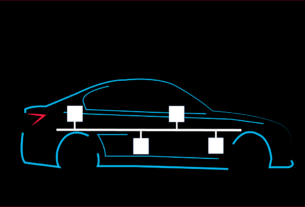Introduction:
J1939 is a communication protocol widely used in the commercial vehicles industry for the exchange of data between different electronic control units (ECUs) in a vehicle. Each J1939 device has a unique identifier called a source address. This identifier is used to address messages sent between the different devices on the J1939 network. Before a device can communicate on the J1939 network, it must perform an address claim procedure to obtain a unique source address. In this article, we will discuss the J1939 address claim procedure in detail.
What is the J1939 Address Claim Procedure?
The J1939 address claim procedure is the process by which a device acquires a unique source address on the J1939 network. The address claim procedure is typically performed during the initialization phase of a device’s power-up sequence. During this procedure, the device broadcasts an address claim message on the J1939 network to request a unique source address.
The address claim message contains information about the device, such as its manufacturer code, identity number, and function instance. The manufacturer code is a unique identifier assigned to the manufacturer of the device. The identity number is a unique identifier assigned to the device by the manufacturer. The function instance is a number that identifies the specific function of the device.
Once the address claim message has been broadcast on the J1939 network, all other devices on the network will receive the message. Each device will compare the information in the address claim message to its own information. If the information in the address claim message matches the information stored in the device’s memory, the device will not respond. If the information in the address claim message does not match the information stored in the device’s memory, the device will respond with an address claim acknowledge message.
The address claim acknowledge message contains the device’s unique source address. The device that sent the address claim message will store the source address in its memory and begin using it for all future communication on the J1939 network.
Address Claim Procedure Steps:
The J1939 address claim procedure can be broken down into the following steps:
Step 1: Initialization – When a device is powered up, it performs an initialization sequence. During this sequence, the device prepares for communication on the J1939 network.
Step 2: Broadcast Address Claim Message – Once the initialization sequence is complete, the device broadcasts an address claim message on the J1939 network. The message contains the device’s manufacturer code, identity number, and function instance.
Step 3: Wait for Address Claim Acknowledge Message – The device waits for an address claim acknowledge message from another device on the J1939 network.
Step 4: Receive Address Claim Acknowledge Message – If another device on the J1939 network responds with an address claim acknowledge message, the device stores the unique source address in its memory and begins using it for all future communication on the J1939 network.
Step 5: Continue Normal Operation – Once the device has acquired a unique source address, it can continue normal operation and communicate with other devices on the J1939 network.
Conclusion:
The J1939 address claim procedure is a critical part of the J1939 protocol. Without a unique source address, a device cannot communicate on the J1939 network. The address claim procedure ensures that each device on the J1939 network has a unique source address, which is essential for proper communication between devices. By following the steps outlined in this article, device manufacturers can ensure that their devices perform the address claim correctly and acquire a unique source address on the J1939 network.



